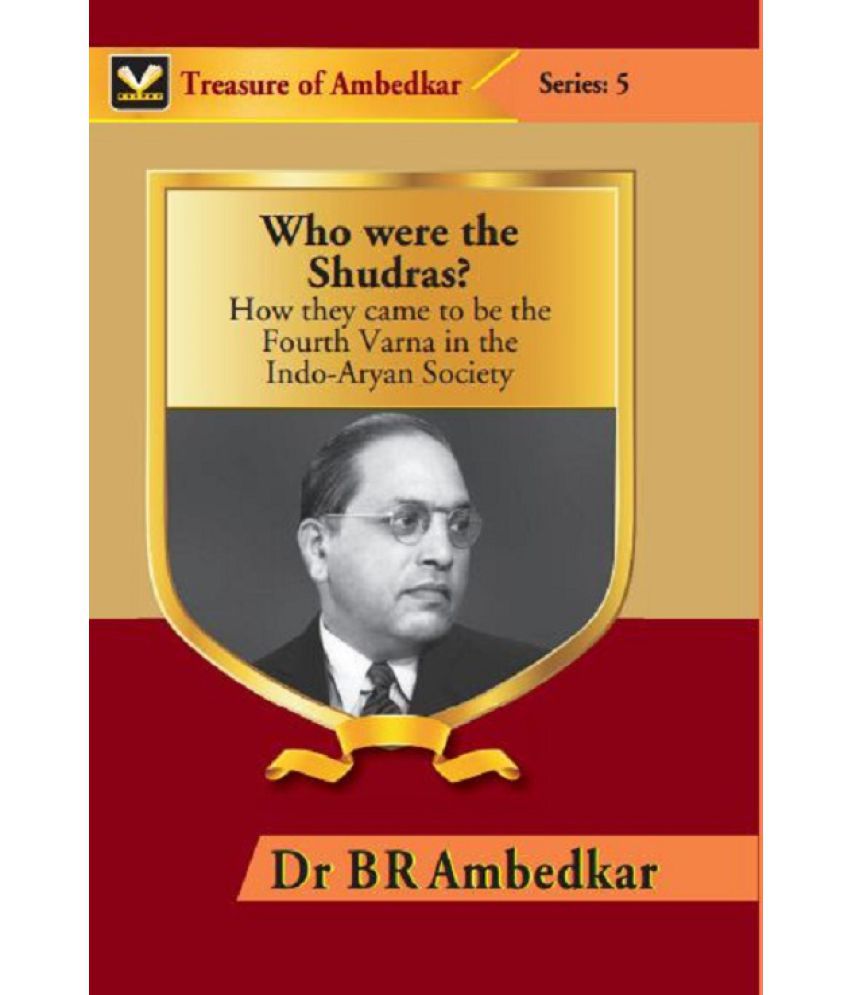by UMANG KUMAR

Babasaheb Ambedkar’s prefaces to his works were often as penetrating and incisive as the main body of the work that followed. His book, Who Were the Shudras? How they came to be the Fourth Varna in the Indo-Aryan Society, published in 1946, was dedicated to Mahatma Phule: “Inscribed to the Memory of Mahatma Jotiba Phule,” runs the dedicatory line in the book.
For Dr Ambedkar, Phule was the “Greatest Shudra of Modern India,” of course, “because he made the lower classes of Hindus conscious of their slavery to the higher classes” but more specifically because he “preached the gospel that for India social democracy was more vital than independence from foreign rule.”
Babasaheb had already set forth this argument in his book from the 1930s, Annihilation of Caste, where he had stressed the need for social reform to precede political reform. It was in the spirit of searching for ways to get to the bottom of social deformities and emerging with clues towards social reform that he had undertaken the project of investigating the history of the Shudras.
Who Were the Shudras? was written before Dr Ambedkar embarked upon the successor volume, Who Were the Untouchables?, which appeared in 1948. As the title of the former book makes it clear, it was regarding the Shudras, who were, in the caste hierarchy, a rung above the Untouchables, Ambedkar’s own people. Yet, in the overall spirit of seeking justice from the Hindu social order, in tribute to the groundwork laid by Jotiba Phule in the anti caste struggle, and to address the “problem of the Shudras,” as he calls it, he undertook the remarkable project of researching and writing Who Were the Shudras.
He explained the seriousness of the problem at hand to justify a penetrating study into the historical background of the problem:
“Under the system of Chaturvarnya, the Shudra is not only placed at the bottom of the gradation but he is subjected to innumerable ignominies and disabilities so as to prevent him from rising above the condition fixed for him by law. Indeed until the fifth Varna of the Untouchables came into being, the Shudras were in the eyes of the Hindus the lowest of the low. This shows the nature of what might be called the problem of the Shudras. If people have no idea of the magnitude of the problem it is because they have not cared to know what the population of the Shudras is. Unfortunately, the census does not show their population separately. But there is no doubt that excluding the Untouchables the Shudras form about 75 to 80 per cent of the population of Hindus. A treatise which deals with so vast a population cannot be considered to be dealing with a trivial problem.”
What mattered to Ambedkar was the fact that the Shudras were “subjected to innumerable ignominies and disabilities,” and given their large proportion in the population of Hindus, their condition pointed to the severity of the social ills within Hinduism – and thus the crying need for social reform.
But, being a brilliant legal mind, he also undertook this painstaking study based on empirical evidence of the fact of the Shudras’ and Untouchables’ actual prevailing condition as proof of the continuance of the Varna system, despite what someone might have claimed. “The best evidence to show that the Varna system is alive notwithstanding there is no law to enforce it, is to be found in the fact that the status of the Shudras and the Untouchables in the Hindu society has remained just what it has been. It cannot therefore be said that a study such as this is unnecessary,” he observed.
He repeated his conviction about the primacy of social reform at different places over the years. In the preface to Who Were the Shudras, he once again alludes to it explicitly, when he describes the possible reactions from his Hindu readers to his book. Speaking about the “politically minded” class of Hindus – surely an influential class of Hindus – Babasaheb felt that they would be “indifferent to such questions” because for them, “Swaraj [was] more important than social reform.”
His book, with its deep interrogation of Hindu sacred literature, was directed at scholars too, since Ambedkar knew that his thorough engagement with that literature had scarcely been carried out by anyone else – either by the Brahmanical Hindus for whom the literature was sacred, or by the Indological scholars who had pioneered the study of India’s past by utilising its Brahmanical literature.
Ambedkar was confident of the fruit of his labours, for he felt that even his scholarly critics would “have to admit that the book [was] rich in fresh insights and new visions.”
ThoughtnAction for more